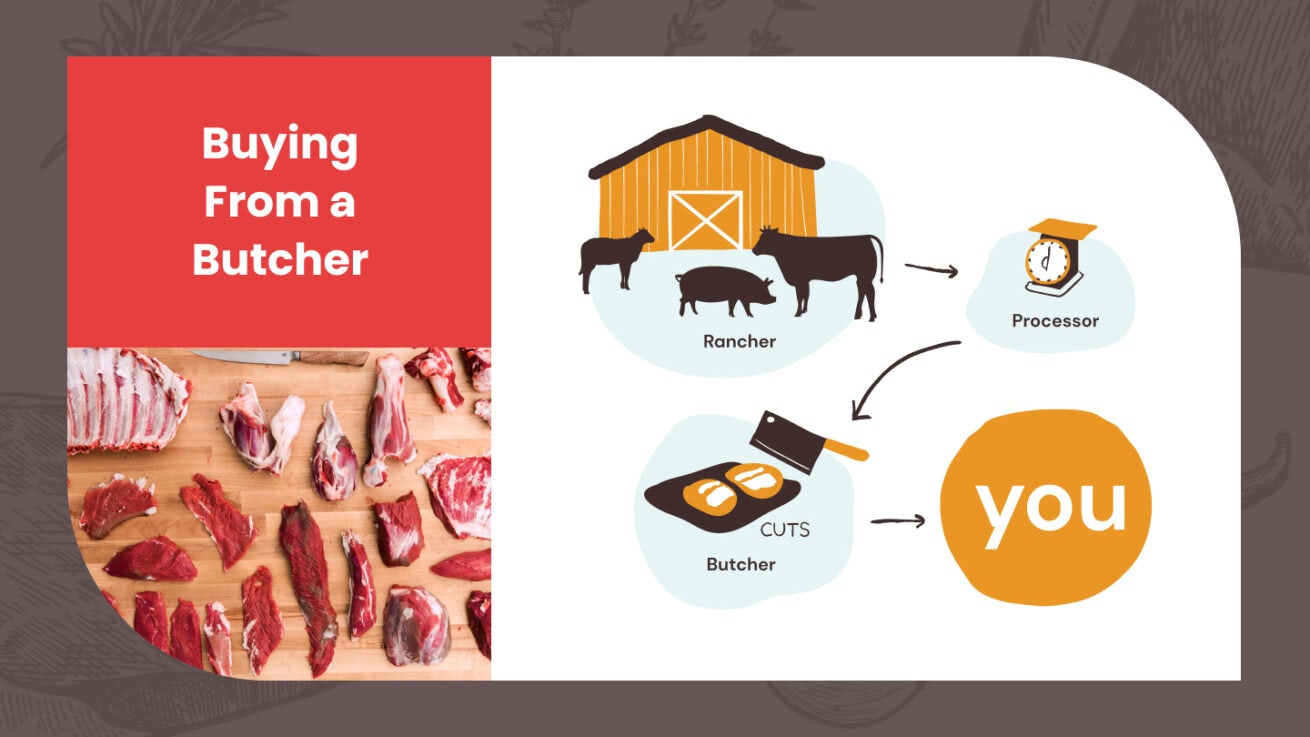
Related article
How to make a butcher’s (beef) heart sing
Good Meat BreakdownBulk BuyingChoosing and Cooking Cuts
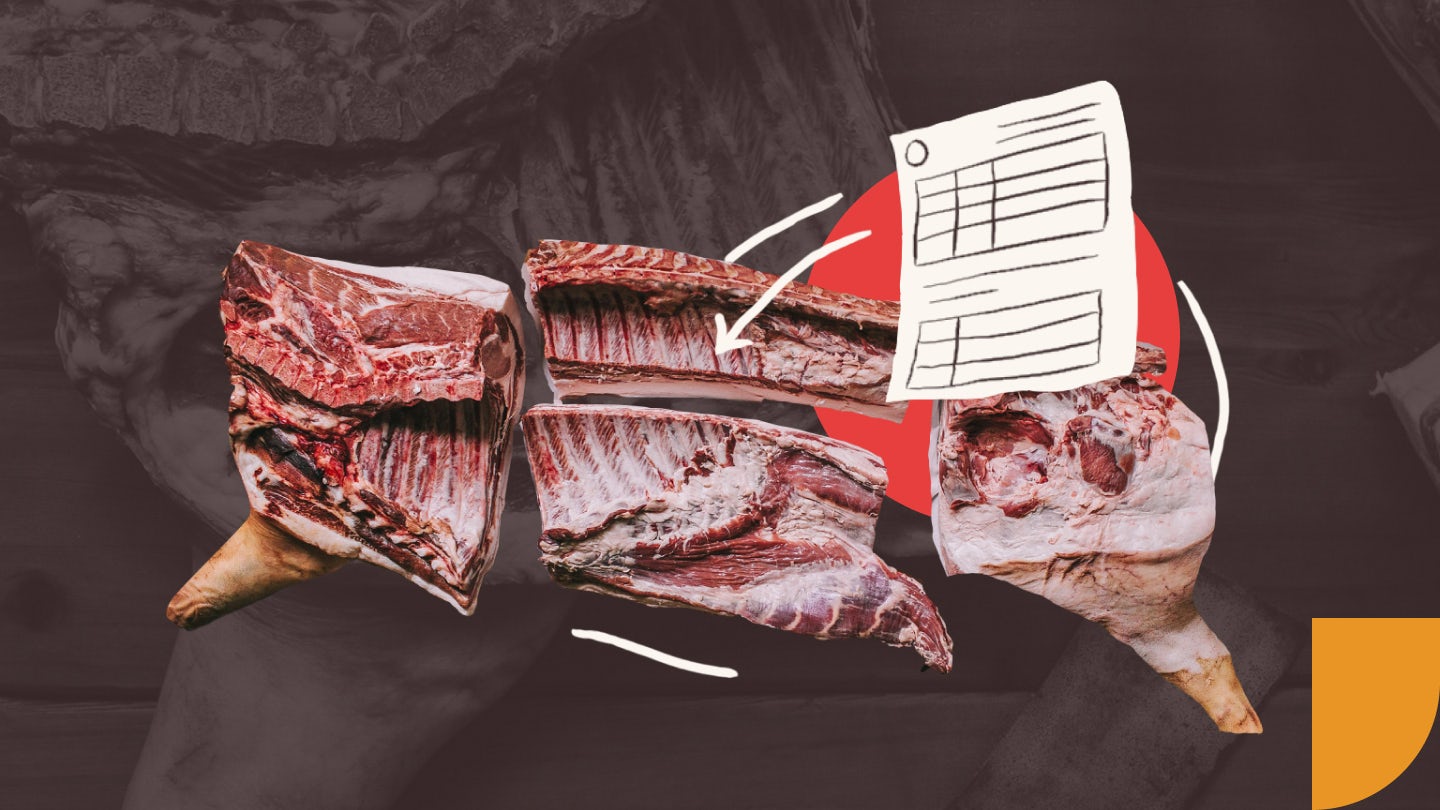
When buying a meat share from a farmer or joining a meat CSA, you’ll likely have to talk with a butcher (sometimes also referred to as the processor) about how you’d like your meat cut.
There are many options when dealing with a whole or a half an animal, which can make this daunting for first-timers. Each species offers unique cuts and the names for them can be regionally specific. For our purposes, we’re going to focus on three species of livestock: beef, pork, and lamb. (Poultry, namely chicken, will most likely be sold whole when purchasing from local producers.)
When purchasing carcass shares, you’ll likely have some control over what cuts you receive back from the processor. In almost every case, your farmer will arrange for slaughter at a local processor and that processor will take care of butchering the carcass into cuts. If the farmer and butcher aren’t the ones to decide on the cuts, you’ll need to decide for yourself. It’s helpful to know how to communicate with the butcher and plan for what you will receive. If you’re new to this process, your farmer and butcher will likely help you along the way, by working with you to create a “cut sheet.”

Related article
How to make a butcher’s (beef) heart sing
Turning a carcass into portioned cuts, with a focus on minimizing waste, requires a clear blueprint that outlines how to maximize yield and cut efficiently. This is where a cut sheet comes in. Consider it a blueprint for your butcher. A cut sheet is the list of cuts and other value-added products that the butcher produces from the whole carcass. Every carcass that is butchered is processed according to a completed cut sheet.
Each butcher has their own version of a cut sheet, which they will provide to you before your animal is slaughtered. Often there are preset configurations that represent the most common requests — a pig butchered into chops, bacon, and ham, or a cow into steaks, roasts, and burger grind. This part of the process is often full of questions for first-time customers, as each processor has their own approach to butchering. Don’t hesitate to ask questions. When dealing with this much quantity, it’s really important that you want what you get and get what you want. Talking with your butcher about how you plan to cook the meat, as well as the number of people you feed at most meals can be helpful in this process.
Cut sheets allow the butcher to work according to your requests and expectations and allows you to prepare for the cuts you’ll be receiving. The cut sheet is also the inventory list that assures you are getting what you asked for. When mistakes happen, as they sometimes do, the cut sheet will help you communicate with the butcher about where things may have gone awry.
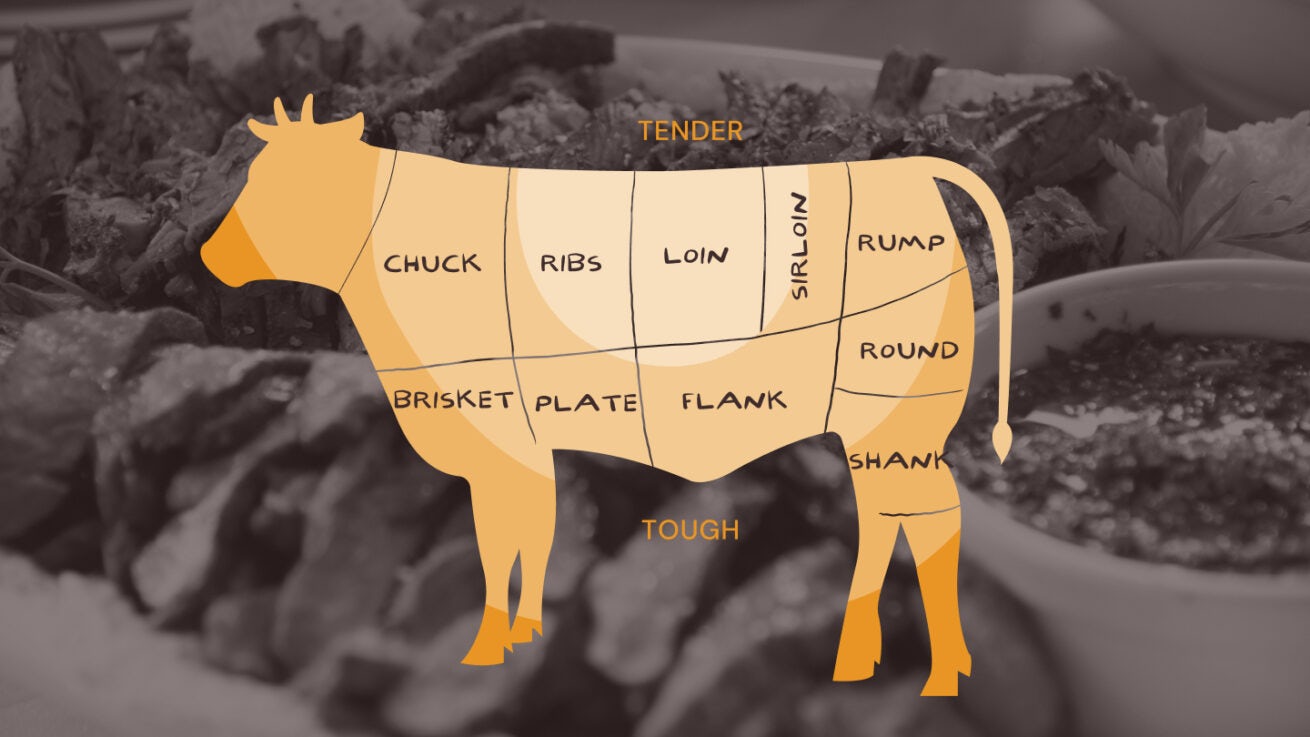
Related article
Curious about approximately how many pounds of chuck steaks, rib-eye steaks, and ground meat you get from 1/4 beef? And how to cook all that meat?
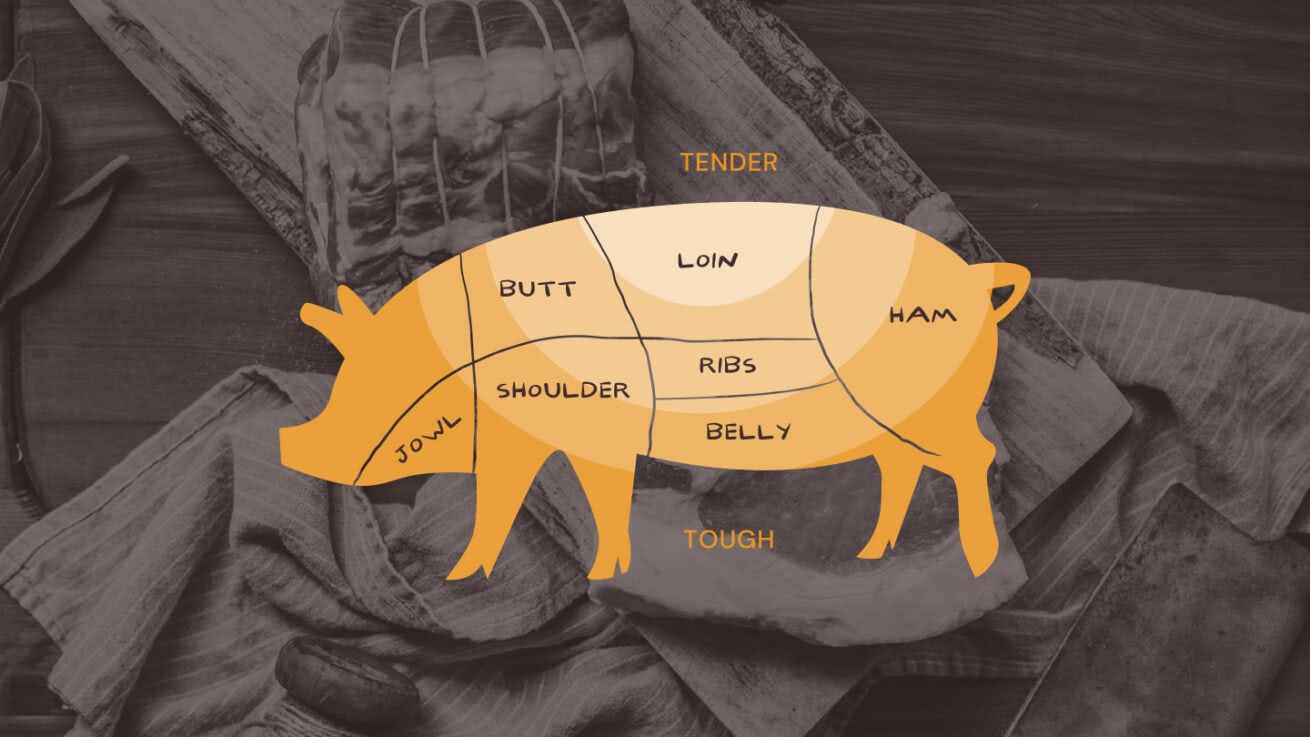
Related article
Curious about approximately how many pounds of ham, shoulder, and belly meat you get from 1/2 of a hog? And how to cook all that meat?
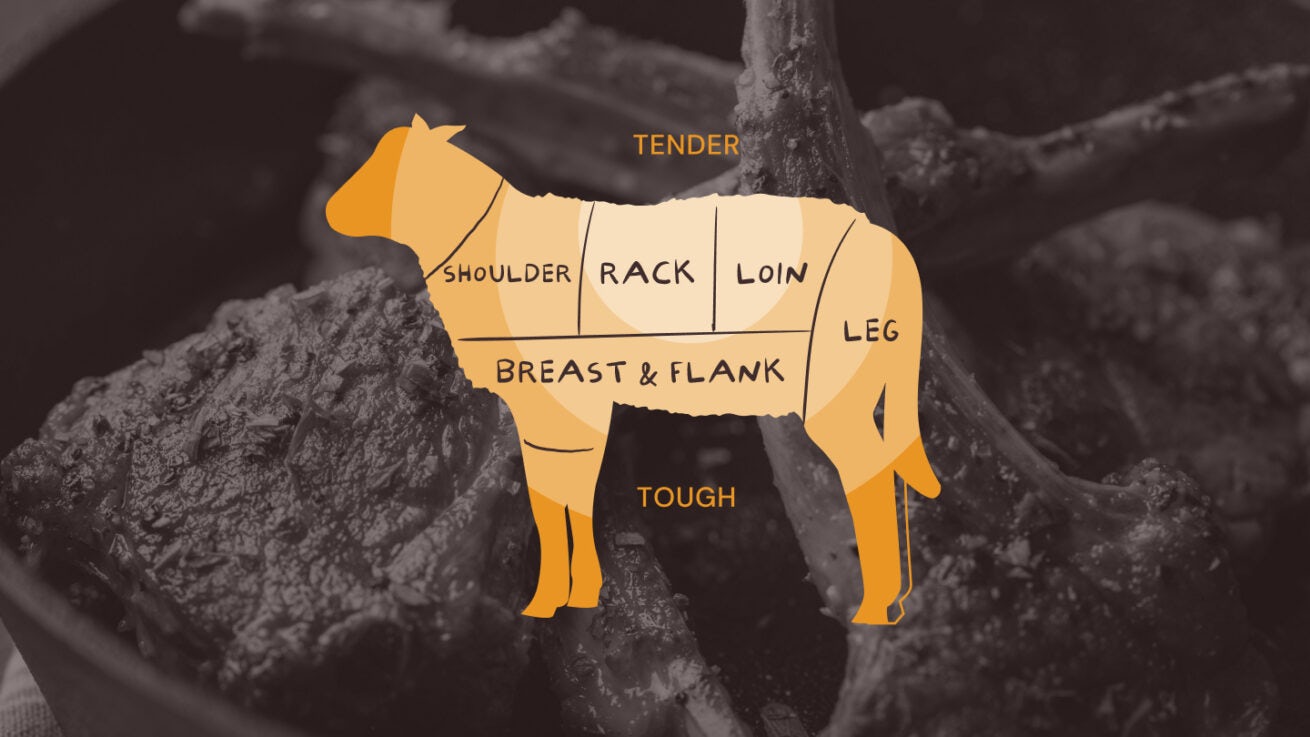
Related article
Curious about approximately how many pounds of rack, leg, and shoulder meat you get from a whole lamb or goat? And how to cook all that meat?
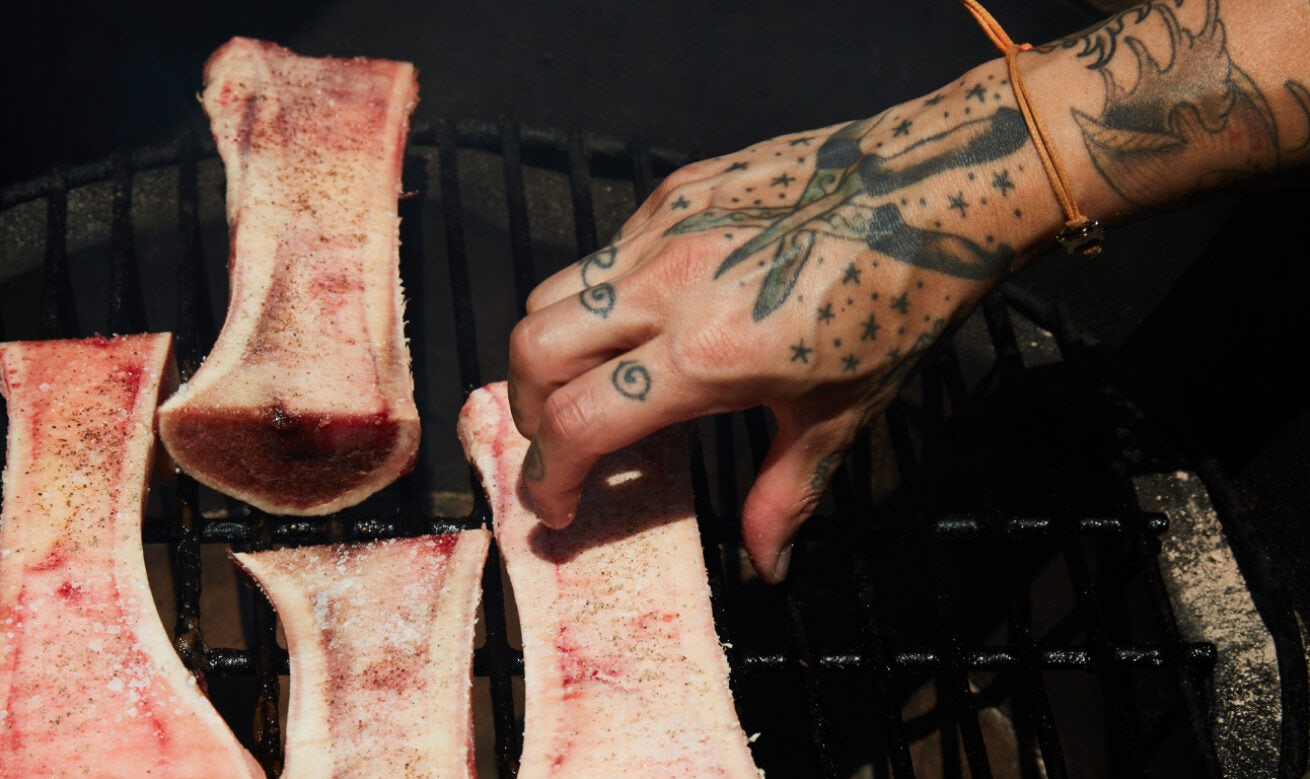
Our responsibility as meat eaters is to maximize the use of a carcass and minimize the waste. Purchasing direct from farmers means broadening the variety of meat you’ll have in your freezer because you’ll be receiving items like bones, offal, and other off-cuts rarely found in stores. While intimidating to some, these items provide some of the most exciting opportunities to experience new dishes, textures, and flavors.
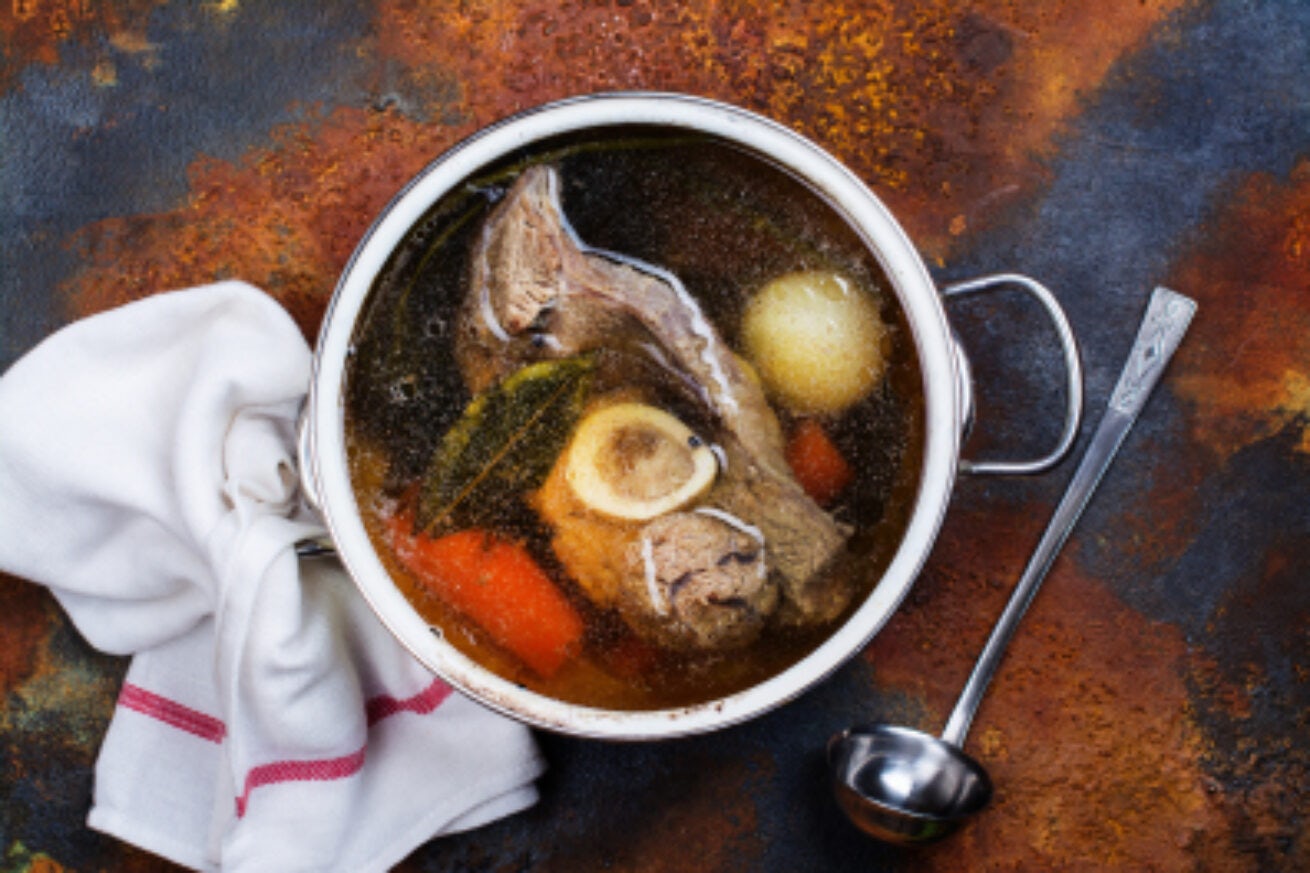
Meat shares often include the animal’s bones. During butchering, much of the carcass is deboned, meaning the bones are removed so that boneless meat cuts can be prepared. Bones are an excellent option for producing nutrient-dense stock and broths and the butcher will cut them to stockpot-friendly sizes. The best bones for stocks are joints, knuckles, and vertebrae. Large round bones, like the femur (in the leg) and the humerus (in the shoulder) are the best sources for marrow, a rich, fatty, decadent substance filling the inner chamber of the bone. Marrow can be teased out of the bones after roasting and is well worth the effort. Butchers can cut round bones into short lengths (crosswise) or canoes (lengthwise) for roasting.
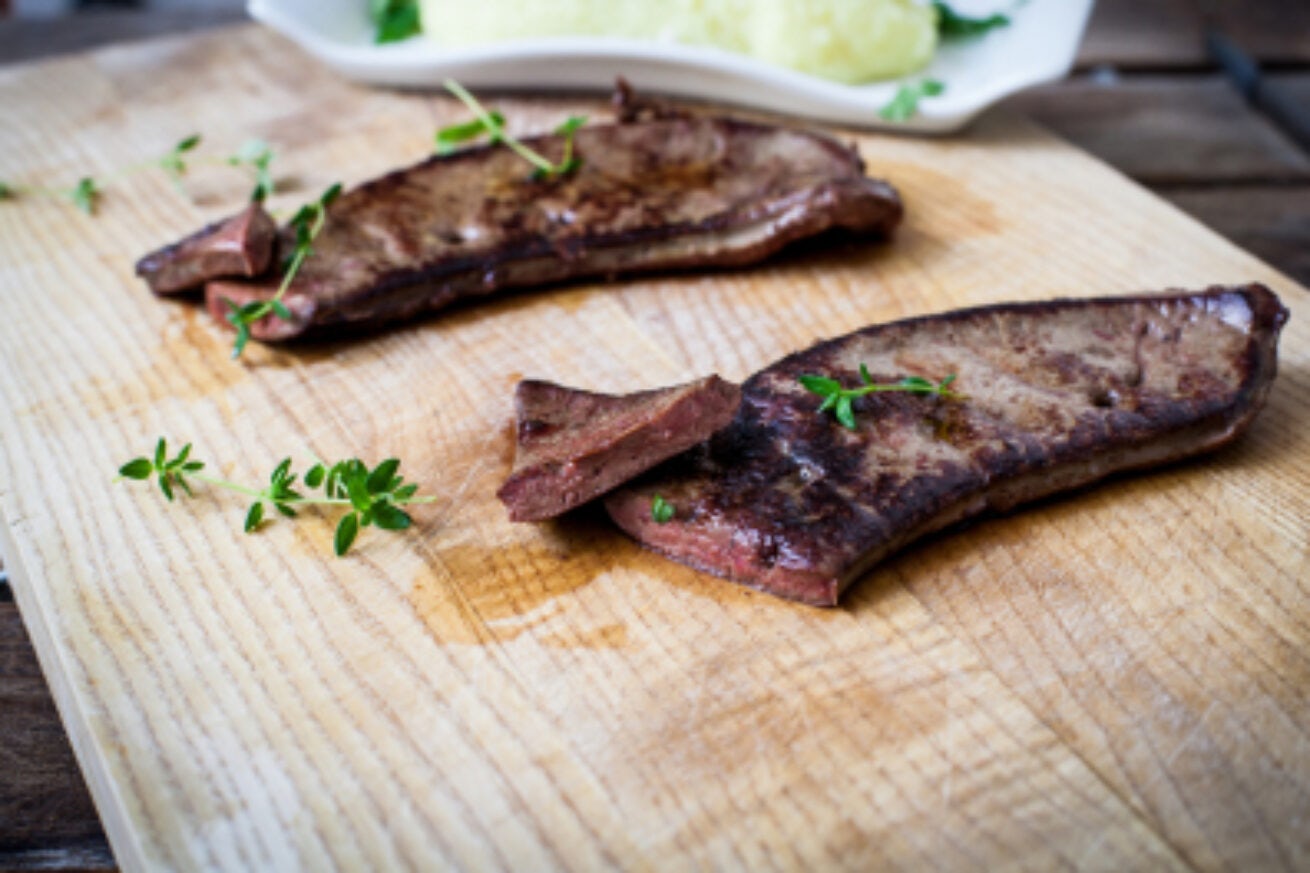
The typical rundown of livestock organ meats will include tongue, heart, liver, and kidneys. Off-cuts will include oxtail, cheeks, pig ears, trotters, and other non-standard cuts. Don’t shy away from exploring these categories. The heart is fantastic grilled, tails and cheeks are ideal slow-cooked cuts, and tongue, liver, and kidneys lend themselves to many traditional preparations.
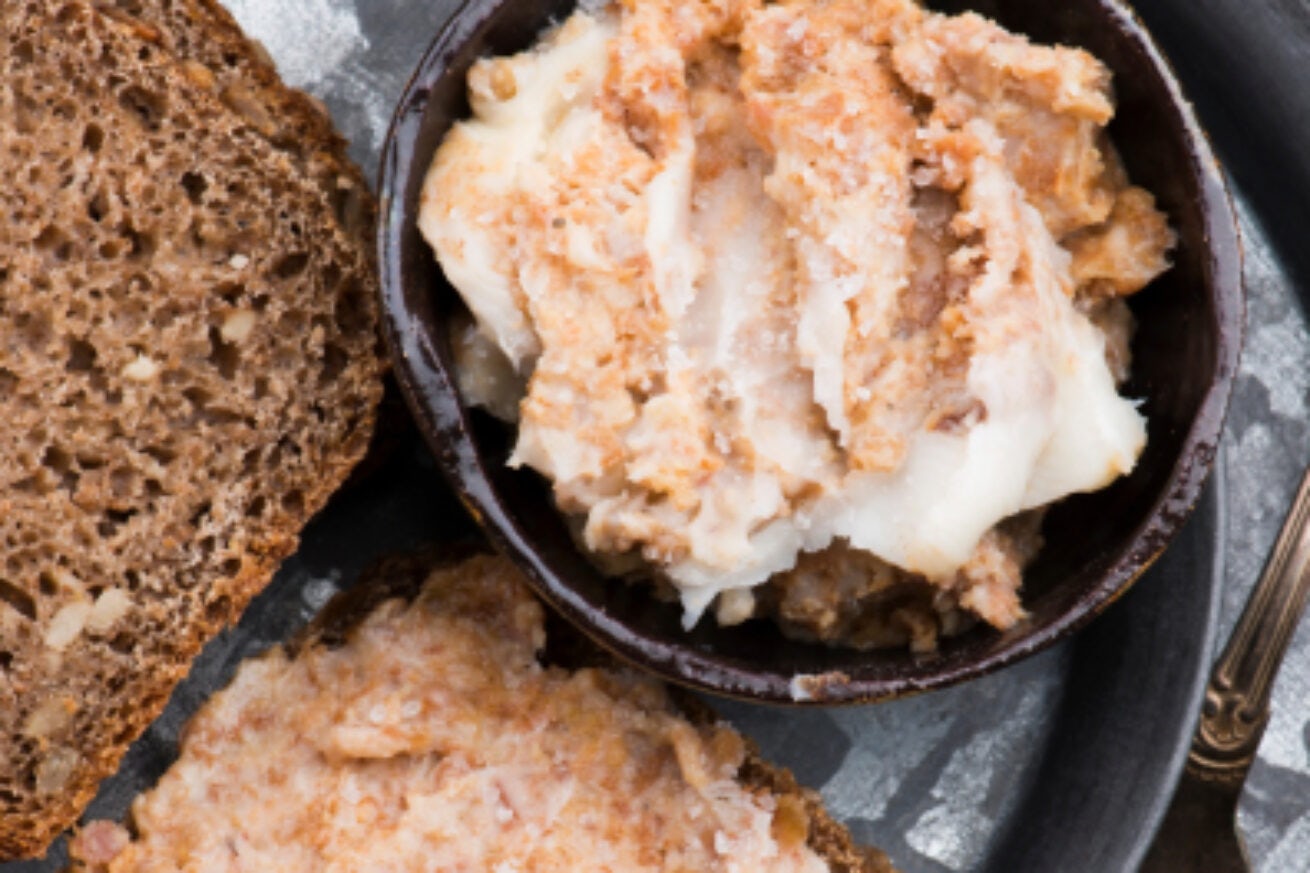
Different areas of the carcass offer different kinds of fat. Most of it will be used to add flavor and lubrication to ground meats, like burger blends, cased sausages, and loose grind. On occasion, you will get some extra fat which can be rendered at home and used for cooking, lotions, or candle making. When purchasing pork shares, you may be offered leaf lard, which is a type of pork fat traditionally used for baking and a great option for pie crust and other pastries.
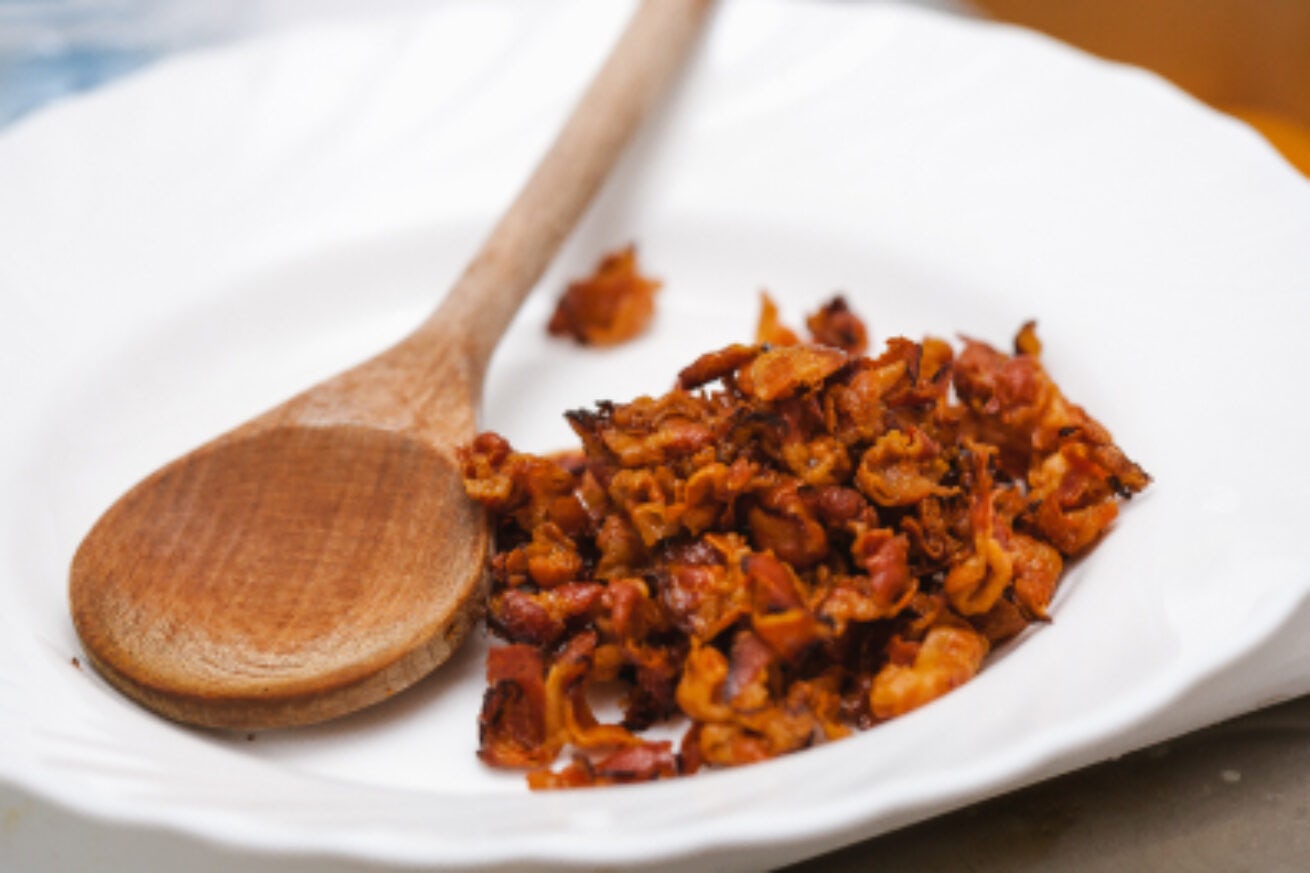
Let’s not forget pork skin! Pork is the only large livestock species that is often butchered skin-on. (For those who know about cracklings, you can likely attest to the unctuous attraction of fatty, salty, crispy pork skin.) Pork cuts can be butchered with the skin removed, but we recommend saving as much of the skin as possible for adding to stocks and broths. It is chock full of nutrients and will help enliven and thicken your sauces. Or just make lots of chicharrones, the original crispy snack.
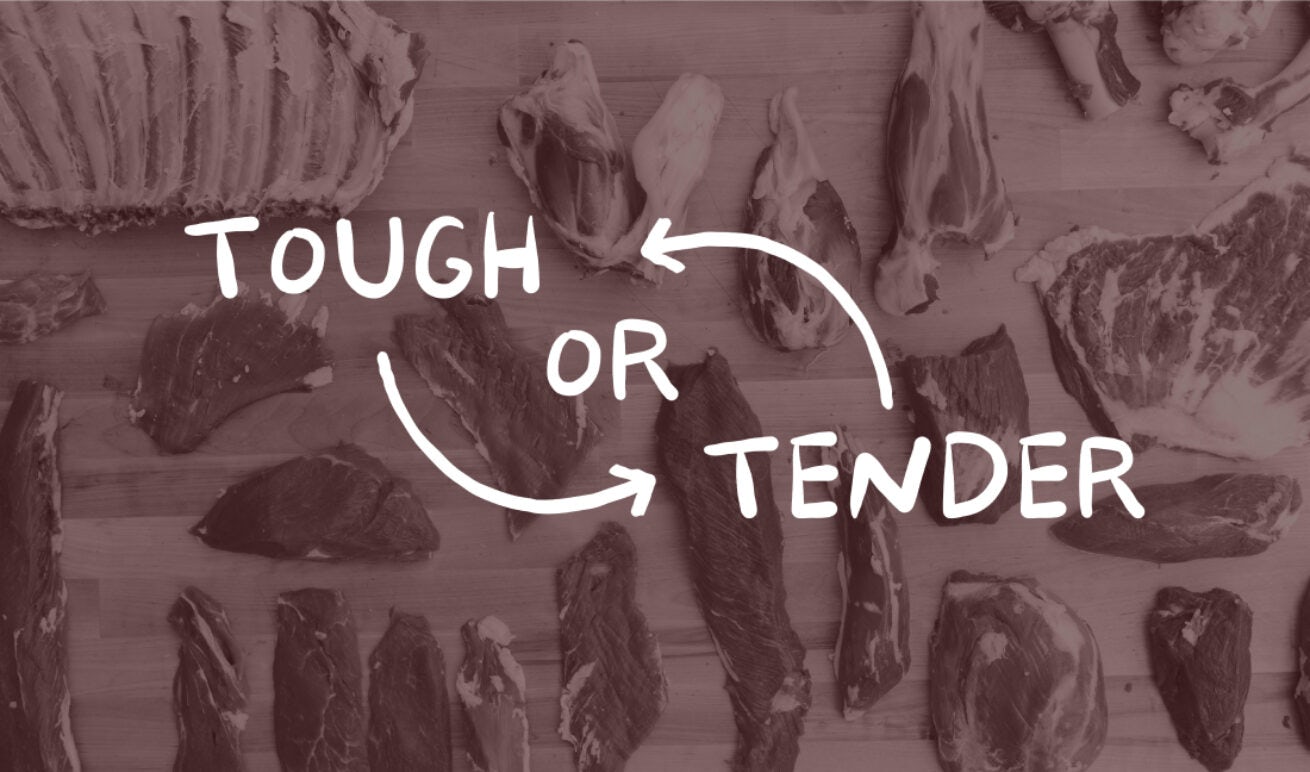
Knowing a little bit about animal anatomy will help you successfully cook any cut.
We created this video to help you navigate the ins and outs of buying local meat in bulk from your Good Meat® farmer or rancher.
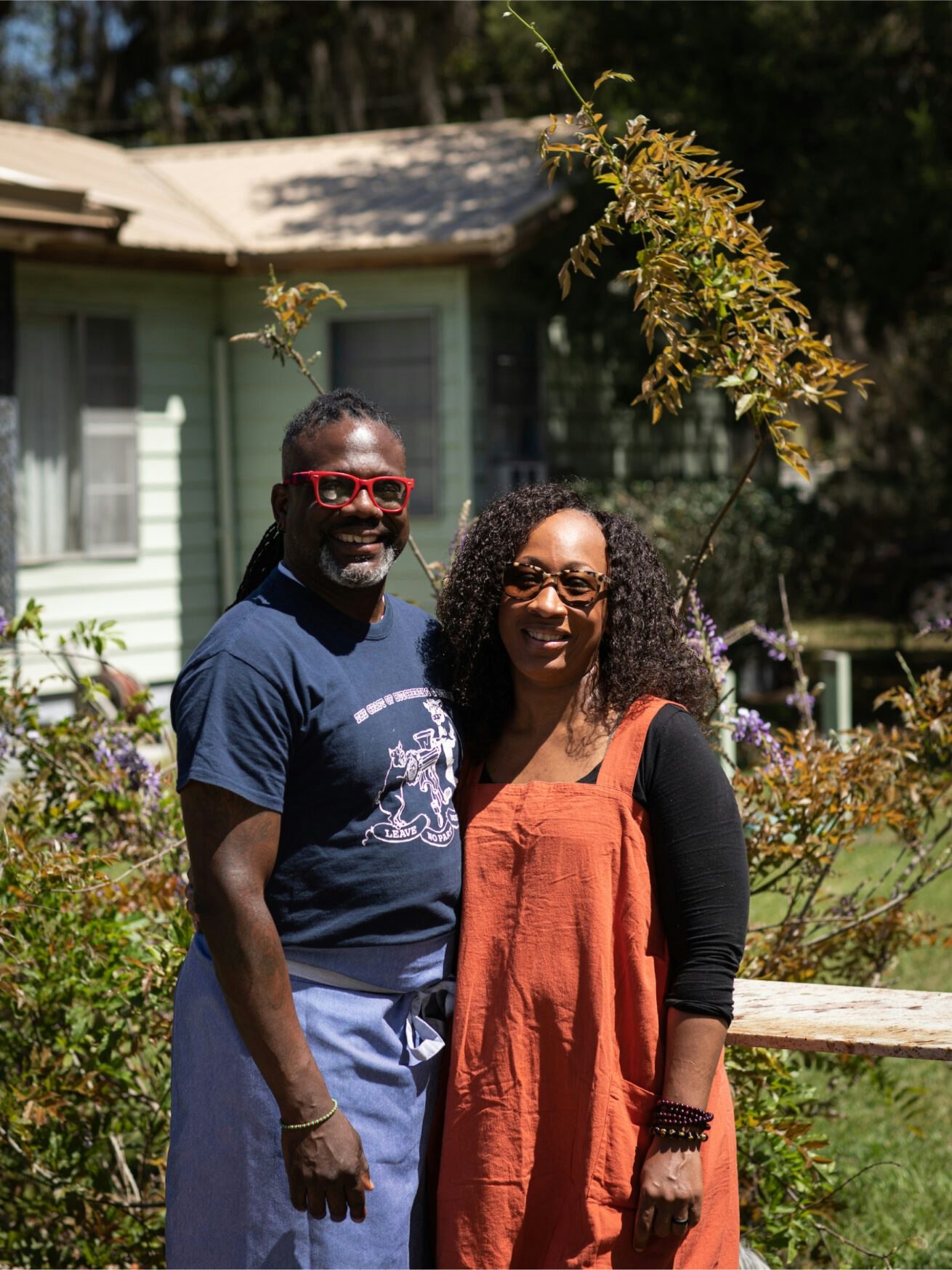
Learn how to take those cuts you ordered home and turn them into delicious meals with guidance from our friends Matthew and Tia Raiford from Strong Roots 9 and Gilliard Farms.

Sign up for our newsletter. We’ll keep you informed and inspired with monthly updates.